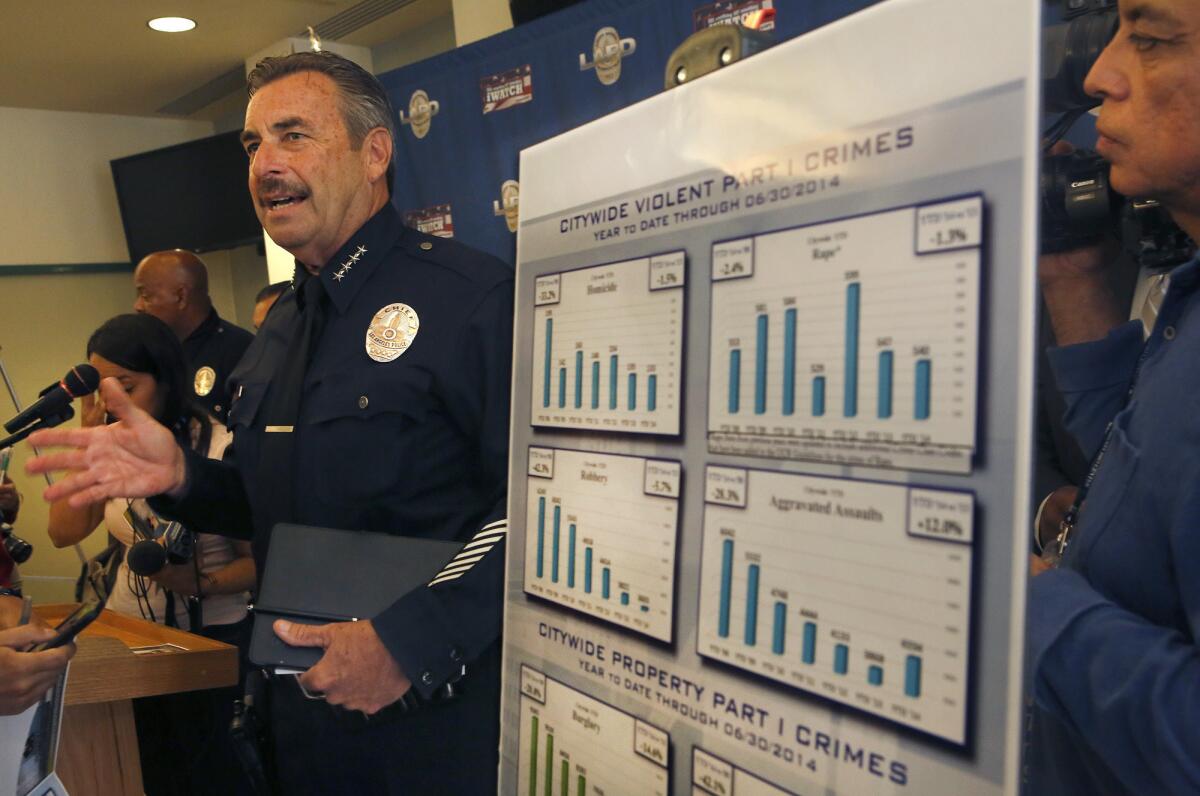LAPD underreported violent crimes: Reforms now underway

- Share via
Following an L.A. Times investigation that found police had seriously underreported violent crimes, the LAPD has launched reforms meant to overhaul its system for classifying crimes.
Department officials will brief the Police Commission, which oversees the LAPD, on its new Data Integrity Unit at a meeting Tuesday morning.
The changes, which focus on enhanced training for officers and increased accountability, come after the investigation this summer that found the department significantly underreported the number of serious assaults and other violent offenses that occurred in the city.
After The Times’ report, LAPD officials created a Data Integrity Unit and tasked it with carrying out the reforms. Over the last few weeks, the unit’s small staff has put about 400 station supervisors, senior detectives and clerical staff through a four-hour training course on how to properly classify crimes to be in line with federal reporting guidelines, officials said in an interview this week.
In coming months, the unit is expected to grow in size and will take on added responsibilities, including a “strike team” that will carry out frequent inspections of crime reports.
The department also plans a simple but significant change in its procedures for classifying crimes: Watch commanders — the lieutenants and sergeants who, among other responsibilities, must approve the crime and arrest reports that officers write — will be required to decide and document how each incident should be classified in the department’s crime database.
The move is intended to reduce confusion and misunderstandings among records clerks, who currently are left to decipher handwritten reports and make decisions on their own about how to classify crimes.
In an interview, Deputy Chief Kirk Albanese said he hoped placing the responsibility squarely on watch commanders would cut down on errors. “At end of the day,” he said, “we are far better served … to get it right out of the gate.”
To help the watch commanders, the department has created a set of detailed charts that provide step-by-step instructions for properly classifying the different types of serious crime that police departments use to calculate crime rates. The charts, Albanese said, were reviewed and approved by officials from the California Department of Justice and the FBI, which sets crime reporting rules for local law enforcement agencies police departments nationwide.
The Times investigation found the LAPD misclassified nearly 1,200 violent crimes as minor offenses during a recent one-year period ending in September 2013. Had the misclassified crimes been recorded correctly, the official figure for violent crime during that period would have been nearly 7% higher. Almost all the misclassified crimes were aggravated assaults, which would have been almost 14% higher during that time.
In response to the report, Chief Charlie Beck and other senior officials said the department had cut down on crime reporting errors in recent years but acknowledged that significant problems remained and promised changes. The findings also spurred the commission’s inspector general to launch an ongoing audit that was expected to look, in part, at whether dramatic declines in crime posted by the department over the last several years were accurate.
Twitter: @joelrubin
More to Read
Sign up for Essential California
The most important California stories and recommendations in your inbox every morning.
You may occasionally receive promotional content from the Los Angeles Times.















